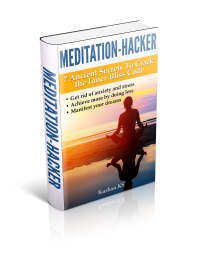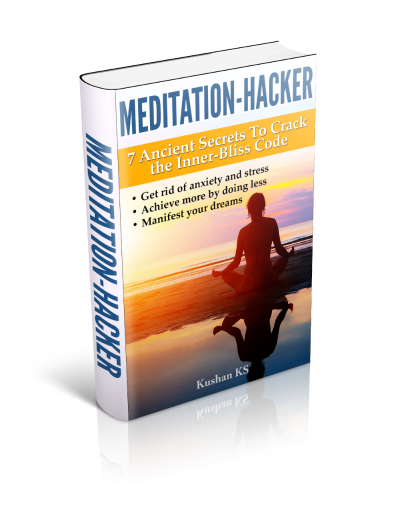Basic Meditation Exercises
A monk asks,"Is there anything more miraculous than the wonders of nature?"
The master replies,"Yes, your awareness of the wonders of nature" - Angelus Silesius

These basic meditation exercises complement the progressive muscle relaxation (PMR) technique discussed in detail in the 'how to meditate for beginners.'
While PMR is specifically done prior to meditation, the exercises listed here can be done at any time of the day.
You can even weave them into your normal workout regimen to work on the flexibility and suppleness of your muscles.
Unlike a regular exercise routine, which usually focuses on anaerobic exertion, basic meditation exercises stress upon diaphragmatic breathing.
What is diaphragmatic breathing?
Diaphragmatic breathing simply refers to breathing through the diaphragm.
Almost all of us are guilty of taking only shallow breaths, barely filling in our chests and depriving our bodies of valuable oxygen. This aggravates the negative impact of the ever-present stress in our lives.
Moreover, there is a buildup of toxicity due to incomplete elimination of waste from our bodies, as lungs are a major excretory organ.
In diaphragmatic breathing, you inhale with force filling up your belly and expanding it like a balloon in all directions, then exhale completely through the nose with an equal amount of force, emptying the belly.
How to do diaphragmatic breathing?
Here are two variations of diaphragmatic breathing that you can experiment with.
- Use the first half of the inhale to fill the belly and the second half to fill the chest. Exhale the air in the chest first followed by that in the belly. This completes one cycle. Repeat as many times as you like.
- Start with inhaling into the belly, then into the lower chest and finally into the upper chest (raise your shoulders a bit, if need be). Exhale in the reverse direction ending with pulling in your tummy toward the spine to completely empty the lungs. Both the inhale and the exhale should be in one continuous flow.
After the quick introduction to diaphragmatic breathing, let us talk about some basic meditation exercises. The first one is pretty straightforward:
- Stretch and Release
Notice any tension in the body. Stretch that body part and breathe diaphragmatically at least three times, and if possible, up to seven times.
Let go and release the stretch slowly.
Do you notice the difference? The body part should feel a lot more relaxed than earlier. Repeat the exercise for every part of the body where you feel tension.
- Spine Compress
This exercise will strengthen your back muscles and help in keeping your spine erect when you sit in meditation.
Start by stretching your spine vertically as much as possible while keeping the arms at the sides the whole time. Then shrink your spine condensing the vertebrae on top of one another. Hunch and make yourself as short as possible without moving your legs.
Repeat as long as comfortable.
Stay still and take two deep diaphragmatic breaths. Become aware of any sensations in the body.
At all times, remember to maintain a continuous flow of breath while doing these exercises. And your breathing should be deep involving both your tummy and your chest. Shallow breaths will result in improper circulation and reduce the benefits you can derive from doing these exercises.
The next section discusses three more basic meditation exercises.
Return from Basic Meditation Exercises to Beginners Guide

Get my book, Meditation-Hacker: 7 Ancient Secrets to Crack the Inner-Bliss Code and receive valuable information on meditation that you can use to improve the quality of your health and life.


Comments
I would love to hear your meditation experiences. And, if you are a beginner, your questions and apprehensions about meditation. Comment below or contact me directly through the navigation bar on the left of this page.